by Audrey Plummer
When I woke up this morning, the first thing I did was grab my phone and check Twitter. Yes, I’m addicted! People my mother’s age like to gripe and complain about technology and the demise of youth in America. However, social media, the main culprit of teenagers’ and young adults’ addiction to their smartphones, is here to stay. If the preservation community wants to be relevant and important to a new generation of Americans, it needs to embrace social media.
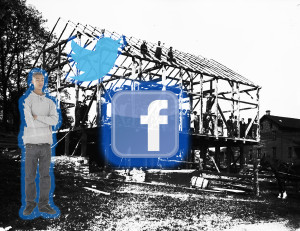 You may be asking yourself, Why is this important? Aren’t Facebook and Twitter just passing fads—only good for celebrities wishing to reveal the latest gag-inducing baby name? Well, no. Social media is a huge part of a young person’s existence, and it is tied in no small part to the use of smartphones.
You may be asking yourself, Why is this important? Aren’t Facebook and Twitter just passing fads—only good for celebrities wishing to reveal the latest gag-inducing baby name? Well, no. Social media is a huge part of a young person’s existence, and it is tied in no small part to the use of smartphones.
According to a 2013 Nielsen report, smartphone users spend on average, 9 hours and 6 minutes a month on social networks. Assuming that older people depressed the average, young adults and teenagers spent much more than 9 hours a month on social media apps.
Young people are mobile; young minorities are especially mobile. These numbers will only increase. According to a Pew survey, 56% of American adults own a smartphone, but 79% of people 18-24 and 81% of people 25-34 own smartphones. As one of the survey’s authors says, “Younger adults—regardless of income level—are very likely to be smartphone owners.” According to a Nielsen report, a majority of young people making under $15,000 a year own a smartphone.
With the changing demographics in America, it is in the preservation community’s best interest to reach young minorities. Often times, young minorities do not have internet access in their homes, and therefore smartphones are their primary internet access. It is cheaper to tack a data plan onto their phone bill than to have internet installed in the home.
If the preservation community wants to reach young people where they are, meet them on their smartphones!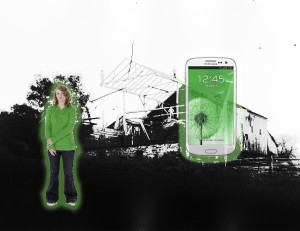
When doing mitigation for Section 106, the preservation community will invariably call for some sort of curriculum or outreach to students. By this they almost always imply small children, usually under the age of 10, because at that age you can force them to pay attention to the historic bridge puppet show. Reaching children this young will not be beneficial in the long term if there is no follow through when they are teenagers and young adults. Little children will grow up, forget about historic preservation, and move on with their lives. So how do you reach the teenagers and young adults and get them engaged with historic preservation? Social media can play a big role, but it has to be implemented intelligently and creatively.
So what is social media exactly?
Taken holistically, social media is a way to connect, share and create interactively with people across the internet. All social media is not created equally, but there are some general guidelines for success. The general principle of social media is that people have many short chunks of time to kill and they are always looking for something interesting to consume. Therefore, you have to be interesting and you have to be concise. Companies like Amazon aim for the ideal that a consumer should be able to find and purchase a product while waiting in line at Starbucks—it should be that quick and easy. Preservation should strive for a similar model.
Another key guideline is to keep the content fresh. You should update at least twice a day. Preservation should constantly remind the user about an interesting historic fact, event or monument.
The constant updates and the push to be interesting can seem overwhelming. Many older marketing people will start a Facebook page or a Twitter account with good intentions, but will eventually feel beleaguered by the daunting task of upkeep. They update sporadically and the content posted is sad and boring. Any followers they had will forget about the organization or will un-follow it.
To mitigate this problem, your marketing person should be someone under the age of 24. They have to be not just comfortable with social media but should consider it integral to their lives. This age group is accustomed to religiously posting interesting content. While it can at times feel daunting to them to do so, the alternative is to be forgotten or scorned by their peers. So, they post.
But what to post and where?
As stated above, all social media is not created equally; each has its own strengths. Let’s go through some of the more well known companies:
Twitter is best for short bits of news (140 characters or less!). Your feed should not consist of a bunch of links! What you post should add something to the conversation. You can have some links, but they should be accompanied by a pithy statement that excites people about the link. (For best practices, writer Lena Dunham and PandoDaily CEO Sarah Lacy do a good job of keeping their Twitter feeds current and interesting.) You can post pictures on Twitter and you can also post videos. The videos are done through Vine, which helps you produce 6-seconds-or-less looping videos. This medium can work well for preservation. For example, someone could create a short video of an archeological excavation or show some cool features of an old school building. Because Vine videos are so short, they have to be beautiful and captivation. The end goal is to have a follower re-tweet or link to the video and share it with friends.
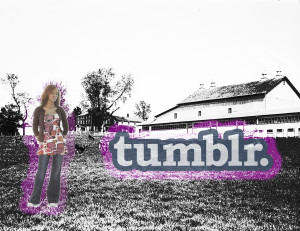 Tumblr is a site good for displaying mixed media content. Teenagers are more apt to be on Tumblr. On your Tumblr you can post articles, pictures, videos, and short form posts. Again, as with Twitter you must be interesting and concise, but you have a bit more leeway. Twitter content tends to be somewhat more constrained and stylized, while Tumblr allows for looser and more organic content. The feel of Tumblr content is grittier that Twitter or Pinterest. This format can work well with preservation because the audience can experience preservation in a more layered fashion.
Tumblr is a site good for displaying mixed media content. Teenagers are more apt to be on Tumblr. On your Tumblr you can post articles, pictures, videos, and short form posts. Again, as with Twitter you must be interesting and concise, but you have a bit more leeway. Twitter content tends to be somewhat more constrained and stylized, while Tumblr allows for looser and more organic content. The feel of Tumblr content is grittier that Twitter or Pinterest. This format can work well with preservation because the audience can experience preservation in a more layered fashion.
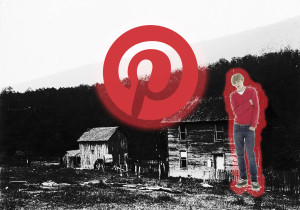 Pinterest is similar to Tumblr in the layered notion of content, but Pinterest is solely for images. Pinterest is stereotyped as containing multitudes of young women and moms pinning pictures of food, crafts, and baby clothes, but there are other demographics represented as well. The key to Pinterest is highly stylized and beautiful pictures. Don’t pin junk on Pinterest! Preservationist could easily find beautiful photographs of old buildings and objects to post on Pinterest that people would find captivating. A big draw on Pinterest is looking at photos, yes, but the more captivating aspect is taking other people’s photos and re-pinning them on your own page. If the preservation community can add more original, entrancing images to Pinterest, it will attract people looking for beautiful pictures. These beautiful images can help interest new people in preservation. Pinterest also drives huge amounts of users to blogs and twitter, so it is a good gateway social media site.
Pinterest is similar to Tumblr in the layered notion of content, but Pinterest is solely for images. Pinterest is stereotyped as containing multitudes of young women and moms pinning pictures of food, crafts, and baby clothes, but there are other demographics represented as well. The key to Pinterest is highly stylized and beautiful pictures. Don’t pin junk on Pinterest! Preservationist could easily find beautiful photographs of old buildings and objects to post on Pinterest that people would find captivating. A big draw on Pinterest is looking at photos, yes, but the more captivating aspect is taking other people’s photos and re-pinning them on your own page. If the preservation community can add more original, entrancing images to Pinterest, it will attract people looking for beautiful pictures. These beautiful images can help interest new people in preservation. Pinterest also drives huge amounts of users to blogs and twitter, so it is a good gateway social media site.
Facebook seems to be the medium that older marketing people are most comfortable with. It is also the medium I am least excited about. Young people, teenagers especially, tend to view Facebook as utilitarian, on par with email, and not incredibly exciting. For preservation, Facebook is useful to keep all interested parties notified of events, and to keep contacts localized. Do have a Facebook page and do keep it updated, but spend more energy on other mediums.
LinkedIn is another social network that should be approached with some caution. LinkedIn is a highly specialized social network for industry and business. This medium can work will if you need to facilitate specialized discussions within the preservation community, but it will not work as well for outreach to the general public. To foster inter-industry discussion, preservationist could host sponsored posts on LinkedIn or have a monthly “talk” from an industry leader. LinkedIn does not require a rigorous daily update schedule like Twitter or Tumblr, but you should still try to update once a week.
Blogs can be considered social media, some of the time. It depends on the amount of interaction occurring on the blog, i.e. are people commenting and discussing on the blog itself. Nowadays, people read a post, but comment using Twitter or Tumblr.
Long-form blogging is still a useful way to get more in-depth information out to the public. The blog should be the last stop on the public engagement train. Use Twitter, Tumblr and Facebook to push blog content to interested users. Don’t expect people to search for the blog on Google! Blogs can be one long body of text, but another format that could work well with preservation is the Mormon mom blog. Mormon SAHMs tend to post lots of pictures with extended captions underneath. This format is more accessible to an audience that is still a little intimidated by historic preservation. Do not forget that you must push blog content to users! Newer social media tools can help inform people about preservation blog content.
Where do apps fit in to preservation outreach?
A few years ago, marketing people embraced QR codes as a way to engage smartphone users with a product. QR codes have failed and companies are moving away from them. Using a QR code is difficult and time consuming for the user, because the user has to download a QR reader, scan the code only to be taken to a blog or website, not something attention-grabbing. In my opinion, the underlying problem with the failure of QR codes is that marketing people wanted to have an interactive smartphone experience without actually designing and creating an app. They turned to the QR code as a cheap, easy substitute and it failed them.
Designed correctly and creatively, apps can be a huge asset to historic preservation. The app experience is more intimate than accessing preservation content on the internet. Some problems with apps are that if the app consumes a lot of data and or a lot of battery life, the user will delete the app. The app also has to work across platforms and hardware, not an easy feat from the development side.
Apps that become popular are addictive games or apps that tap into the self-absorption of the audience. (Apps that are incredibly useful also become popular, but a useful historic preservation app would not be marketed to the general public. It would probably be a highly specialized app designed, say, to make site surveys easier to complete and upload to a database.) Historic preservation could potentially come up with an addictive game, although that might not keep people interested in preservation over the long term or push them to get more involved in historic preservation.
Playing off a person’s self-absorption, especially with a younger audience, is probably a better option. People tend to care about their history and roots. One app example could be connecting a person’s genealogical history from Ancestry.com with historic landmarks and districts in their vicinity. When someone is traveling near a landmark that has cultural or historical significance to them, the app pushes content to their phone explaining the cultural significance and how it relates to the user. To take it a step further, the user can then Tweet, pin or post this new discovery and share it with their social network.
Historic preservation meshes well with social media. People believe their history is interesting, and they would be willing to read interesting content about it. Pictures of old buildings and artifact can be captivating and beautiful and inspire people. To tap into this audience, the preservation community needs to invest the time and energy in producing gorgeous, fascinating visual content along with interesting and succinct text. Engaging the public, especially younger people, should be a high priority for the historic preservation community. Done correctly, social media can play a major role in increasing public awareness.
A native Georgian, Audrey Plummer graduated in 2011 from Georgia Tech with a Bachelor of Science in Architecture. She is currently pursuing a dual Master in Architecture and Master in City and Regional Planning at Georgia Tech. Audrey joined the Pennsylvania Historic Preservation Office as a 2013 summer intern through a partnership with the Pennsylvania Department of Transportation.
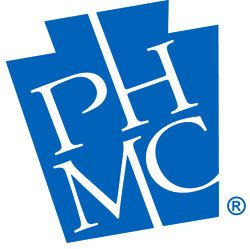
Audrey,thanks for a great an informative post on a topic I have been trying to better understand! As a cranky social media hater, I needed to have someone who gets it explain it all! Well done! You have helped crank open my closed mind on this! We will miss your creative energy at PHMC! Best of luck as you start your fall semester!
Pamela